Glypican-3 deficiency in liver cancer upregulates MAPK/ERK pathway but decreases cell proliferation
- PMID: 39113871
- PMCID: PMC11301284
- DOI: 10.62347/TTNY4279
Glypican-3 deficiency in liver cancer upregulates MAPK/ERK pathway but decreases cell proliferation
Abstract
Glypican-3 (GPC3) is overexpressed in hepatocellular carcinomas and hepatoblastomas and represents an important therapeutic target but the biologic importance of GPC3 in liver cancer is unclear. To date, there are limited data characterizing the biological implications of GPC3 knockout (KO) in liver cancers that intrinsically express this target. Here, we report on the development and characterization of GPC3-KO liver cancer cell lines and compare to them to parental lines. GPC3-KO variants were established in HepG2 and Hep3B liver cancer cell lines using a lentivirus-mediated CRISPR/Cas9 system. We assessed the effects of GPC3 deficiency on oncogenic properties in vitro and in murine xenograft models. Downstream cellular signaling pathway changes induced by GPC3 deficiency were examined by RNAseq and western blot. To confirm the usefulness of the models for GPC3-targeted drug development, we evaluated the target engagement of a GPC3-selective antibody, GC33, conjugated to the positron-emitting zirconium-89 (89Zr) in subcutaneous murine xenografts of wild type (WT) and KO liver cancer cell lines. Deletion of GPC3 significantly reduced liver cancer cell proliferation, migration, and invasion compared to the parental cell lines. Additionally, the tumor growth of GPC3-KO liver cancer xenografts was significantly slower compared with control xenografts. RNA sequencing analysis also showed GPC3-KO resulted in a reduction in the expression of genes associated with cell cycle regulation, invasion, and migration. Specifically, we observed the downregulation of components in the AKT/NFκB/WNT signaling pathways and of molecules related to cell cycle regulation with GPC3-KO. In contrast, pMAPK/ERK1/2 was upregulated, suggesting an adaptive compensatory response. KO lines demonstrated increased sensitivity to ERK (GDC09994), while AKT (MK2206) inhibition was more effective in WT lines. Using antibody-based positron emission tomography (immunoPET) imaging, we confirmed that 89Zr-GC33 accumulated exclusively in GPC3-expression xenografts but not in GPC3-KO xenografts with high tumor uptake and tumor-to-liver signal ratio. We show that GPC3-KO liver cancer cell lines exhibit decreased tumorigenicity and altered signaling pathways, including upregulated pMAPK/ERK1/2, compared to parental lines. Furthermore, we successfully distinguished between GPC3+ and GPC3- tumors using the GPC3-targeted immunoPET imaging agent, demonstrating the potential utility of these cell lines in facilitating GPC3-selective drug development.
Keywords: Hepatocellular carcinoma; MAPK/ERK pathway; codrituzumab; glypican-3; hepatoblastoma; invasion; migration; molecular imaging; proliferation; radiopharmaceutical therapy.
AJCR Copyright © 2024.
Conflict of interest statement
None.
Figures
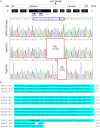

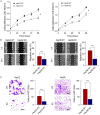
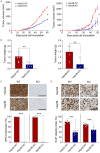

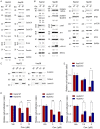
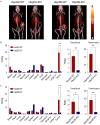
Similar articles
-
Site-Specifically Conjugated Single-Domain Antibody Successfully Identifies Glypican-3-Expressing Liver Cancer by Immuno-PET.J Nucl Med. 2023 Jul;64(7):1017-1023. doi: 10.2967/jnumed.122.265171. Epub 2023 Mar 30. J Nucl Med. 2023. PMID: 36997331 Free PMC article.
-
Glypican-3-targeted 89Zr PET imaging of hepatocellular carcinoma.J Nucl Med. 2014 May;55(5):799-804. doi: 10.2967/jnumed.113.132118. Epub 2014 Mar 13. J Nucl Med. 2014. PMID: 24627434 Free PMC article.
-
Imaging of hepatocellular carcinoma patient-derived xenografts using ⁸⁹Zr-labeled anti-glypican-3 monoclonal antibody.Biomaterials. 2014 Aug;35(25):6964-71. doi: 10.1016/j.biomaterials.2014.04.089. Epub 2014 May 16. Biomaterials. 2014. PMID: 24836949 Free PMC article.
-
Glypican-3: a marker and a therapeutic target in hepatocellular carcinoma.FEBS J. 2013 May;280(10):2471-6. doi: 10.1111/febs.12126. Epub 2013 Jan 31. FEBS J. 2013. PMID: 23305321 Review.
-
Glypican 3-Targeted Therapy in Hepatocellular Carcinoma.Cancers (Basel). 2019 Sep 10;11(9):1339. doi: 10.3390/cancers11091339. Cancers (Basel). 2019. PMID: 31510063 Free PMC article. Review.
Cited by
-
Targeting Glypican-3 for Liver Cancer Therapy: Clinical Applications and Detection Methods.J Clin Transl Hepatol. 2025 Aug 28;13(8):665-681. doi: 10.14218/JCTH.2025.00099. Epub 2025 Aug 7. J Clin Transl Hepatol. 2025. PMID: 40862283 Free PMC article. Review.
-
Characterization of an Activated Metabolic Transcriptional Program in Hepatoblastoma Tumor Cells Using scRNA-seq.Int J Mol Sci. 2024 Dec 4;25(23):13044. doi: 10.3390/ijms252313044. Int J Mol Sci. 2024. PMID: 39684755 Free PMC article.
-
Hepatoblastoma: From Molecular Mechanisms to Therapeutic Strategies.Curr Oncol. 2025 Mar 4;32(3):149. doi: 10.3390/curroncol32030149. Curr Oncol. 2025. PMID: 40136353 Free PMC article. Review.
References
-
- Sung H, Ferlay J, Siegel RL, Laversanne M, Soerjomataram I, Jemal A, Bray F. Global cancer statistics 2020: GLOBOCAN estimates of incidence and mortality worldwide for 36 cancers in 185 countries. CA Cancer J Clin. 2021;71:209–249. - PubMed
-
- Siegel RL, Miller KD, Wagle NS, Jemal A. Cancer statistics, 2023. CA Cancer J Clin. 2023;73:17–48. - PubMed
-
- Bernfield M, Gotte M, Park PW, Reizes O, Fitzgerald ML, Lincecum J, Zako M. Functions of cell surface heparan sulfate proteoglycans. Annu Rev Biochem. 1999;68:729–777. - PubMed
Grants and funding
LinkOut - more resources
Full Text Sources
Research Materials
Miscellaneous
